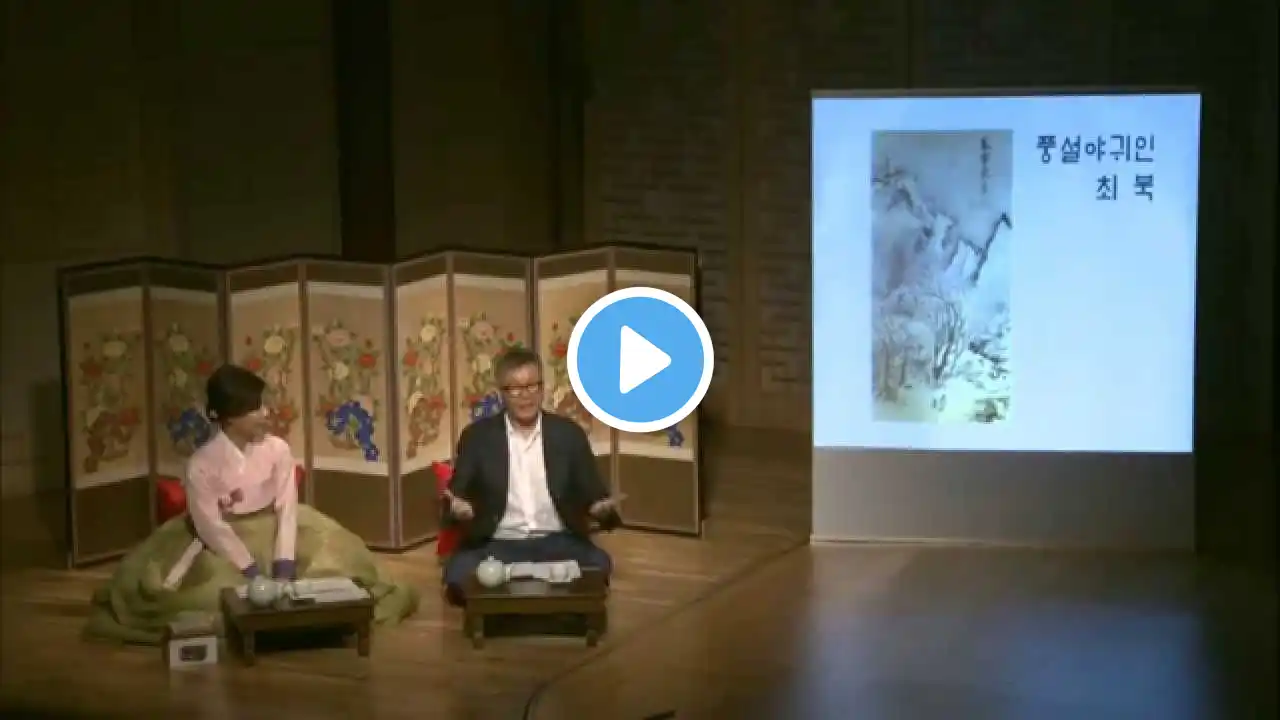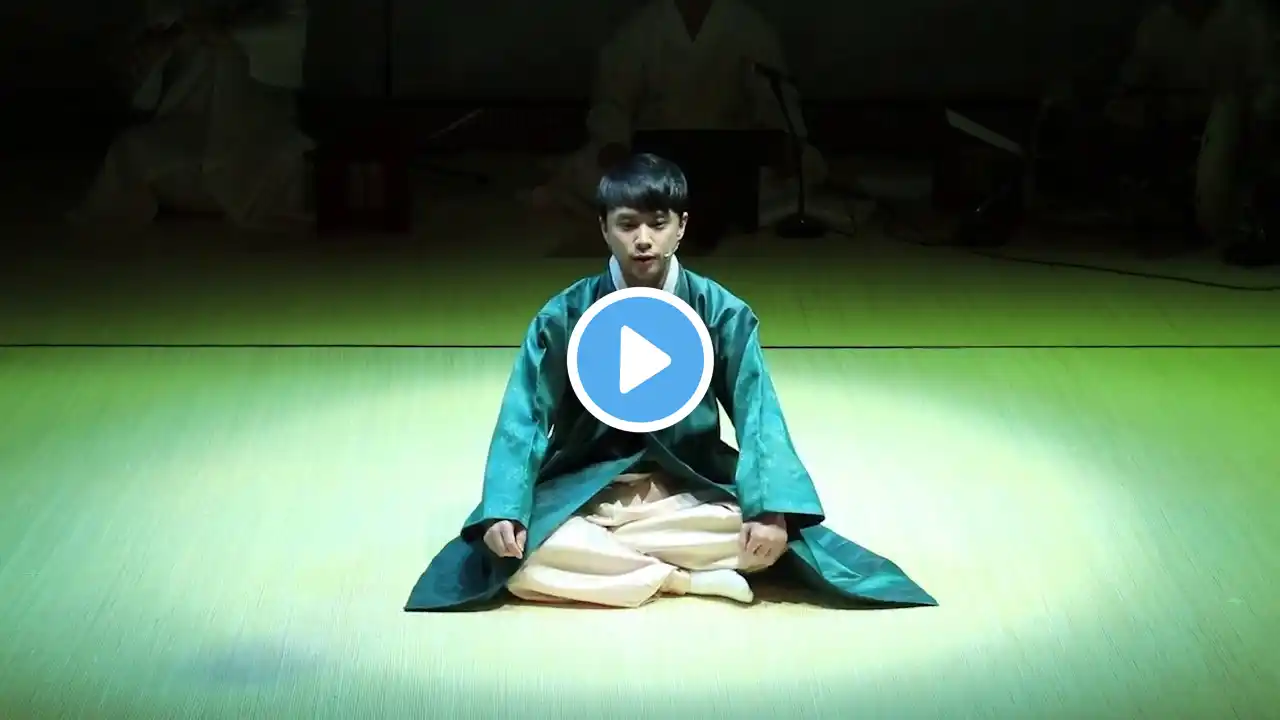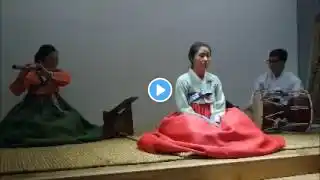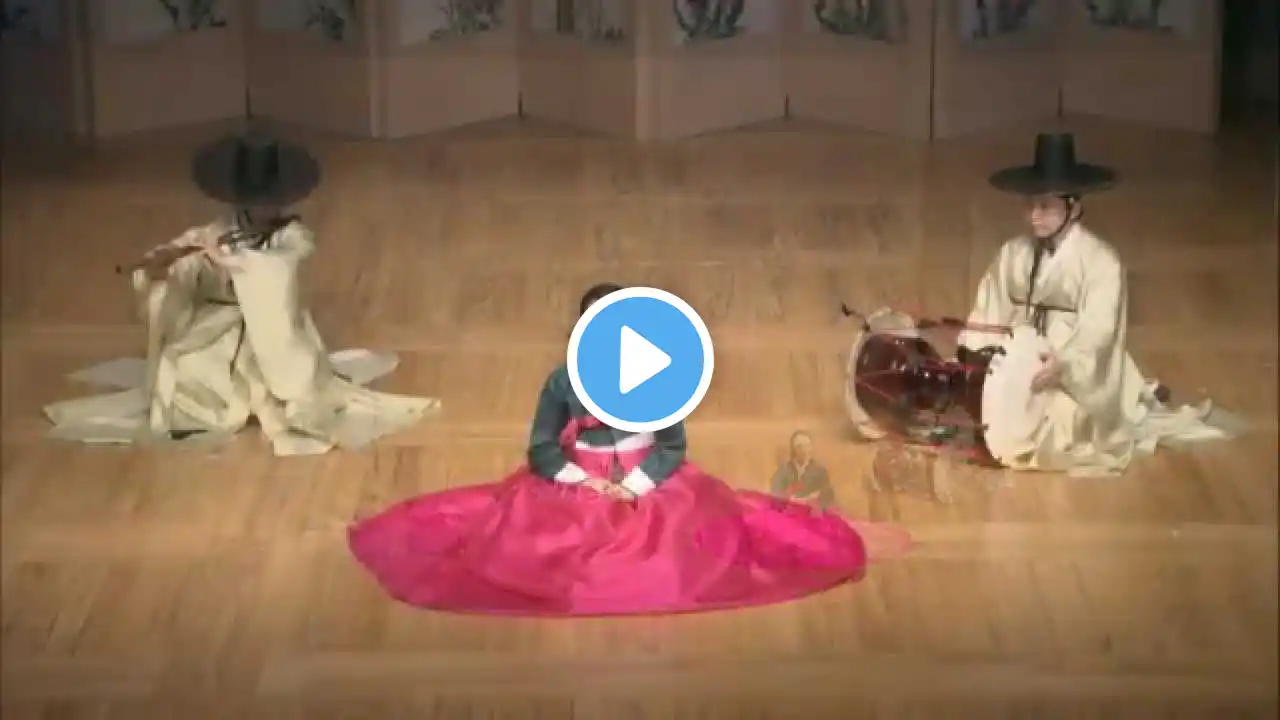![국립국악원 토요정담: 미술평론가 손철주[2015.05.30.] 03. 가사 '처사가' (Gasa, “Cheogasa”)](https://krtube.net/image/ezNNgaO1a70.webp)
국립국악원 토요정담: 미술평론가 손철주[2015.05.30.] 03. 가사 '처사가' (Gasa, “Cheogasa”)
국립국악원 토요정담 * 미술평론가 손철주 03 가사 '처사가' 가사는 시조시를 노래하는 가곡(歌曲), 시조(時調)와 더불어 지식인들이 풍류로 즐기던 노래로, ‘바른 노래’라는 뜻의 ‘정가(正歌)’라고 한다 가곡이나 시조에 비해 긴 노랫말로, 아름다운 경치 속에서 유유자적하는 즐거움이나 사랑 등을 소재로 하고 있으며, 장구와 대금이나 단소, 피리 등의 단촐한 반주가 사용되는데, 오늘은 특별히 거문고 반주를 더했다 '처사가'는 벼슬을 그만두고 강호로 나아가 자연과 더불어 즐기는 느긋한 기쁨을 나타낸 노래이다 한문 구절이 많아서 바로 이해하기 는 어렵지만, 거친 베옷에 대나무 지팡이 하나 들고 강산을 유람하는 선비의 모습을 상상하며 들어보자 ○ 노래/이준아, 대금/박장원, 거문고/이방실, 장구/조성욱 “Saturday Talk Show,” the friendly Saturday talk concert * Art Critic Sohn Cheol-ju 03 Gasa, “Cheogasa” (49:45) Gasa are songs that were enjoyed as an appreciation for the arts by intellectuals along with Gagok and Sijo that sang traditional three-verse poems, and it is also called “Jeongga,” meaning “righteous song ” It is has longer lyrics compared to Gagok or Sijo and deals with themes such as freely enjoying beautiful scenery or love Although simple accompaniment is usually used such as janggu, daegeum, nanso, or piri, geomungo accompaniment has been specially added in today’s performance “Cheosaga” is a song that expresses carefree joy of being in nature after leaving a government position to experience the world Although the verses can be difficult to catch right away due to frequent use of classical Chinese, try to picture a classical scholar sightseeing the beautiful land of Korea wearing rugged hemp clothes with a cane in one hand as you listen to the song ○ Vocal: Lee Jun-a, Daegeum: Parl Jang-won, Geomungo: Lee Bang-sil, Janggu: Jo Seong-wuk ○ 주최 및 촬영/국립국악원[National Gugak Center]
















